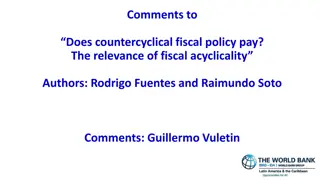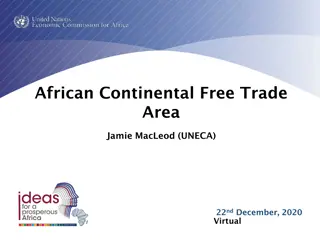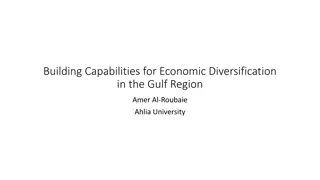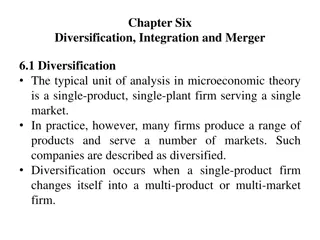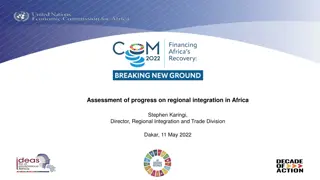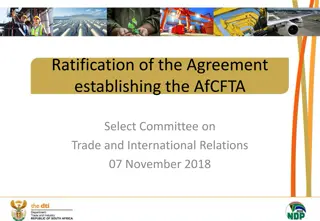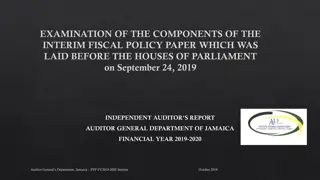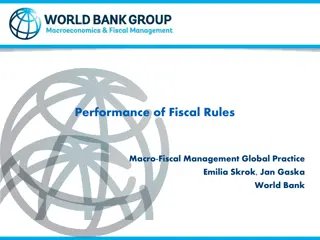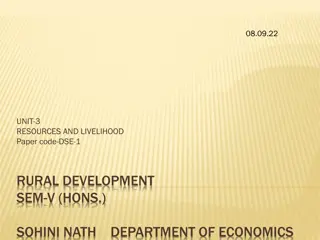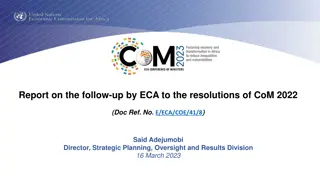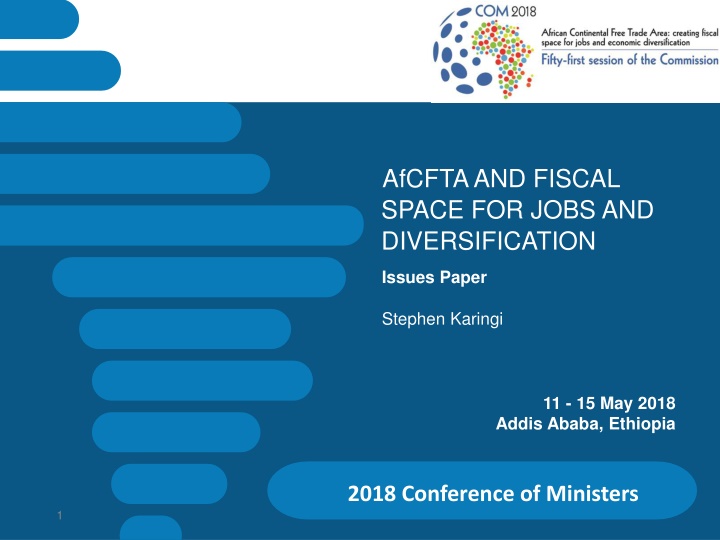
Unlocking Africa's Economic Potential: AfCFTA and Fiscal Space for Jobs and Diversification
Discover how the African Continental Free Trade Area (AfCFTA) can enhance economic growth, create job opportunities, and diversify African businesses. Explore the potential for sustainable development through intra-Africa trade, structural transformation, and long-term growth initiatives.
Download Presentation

Please find below an Image/Link to download the presentation.
The content on the website is provided AS IS for your information and personal use only. It may not be sold, licensed, or shared on other websites without obtaining consent from the author. If you encounter any issues during the download, it is possible that the publisher has removed the file from their server.
You are allowed to download the files provided on this website for personal or commercial use, subject to the condition that they are used lawfully. All files are the property of their respective owners.
The content on the website is provided AS IS for your information and personal use only. It may not be sold, licensed, or shared on other websites without obtaining consent from the author.
E N D
Presentation Transcript
AfCFTA AND FISCAL SPACE FOR JOBS AND DIVERSIFICATION Issues Paper Stephen Karingi 11 - 15 May 2018 Addis Ababa, Ethiopia 2018 Conference of Ministers 1
Rationale| African business 2 Africa s economic structure is broadly similar to India s India Africa Population 1.3bn 1.2bn GDP 1.3bn Tax revenue to GDP 1.2bn 20.4% 20% India is a single consolidated market (7th biggest in the world) Allows scale economies and competitive businesses Africa is fragmented over 54 countries and 107 unique land border Businesses face average tariffs of 6.9% non-tariff barriers AfCFTA and fiscal space for jobs and diversification | Issues paper UNECA.ORG 2
Rationale| African business 3 Opportunities for African businesses The AfCFTA consolidates African market Easing economies of scale and scope, and regional value chains It also allows African businesses to gain from Africa s good market dynamics Africa s Gross Domestic Product at current market prices (US$ trillion), forecasts $16 tn $14 tn GDP (high-case scenario) GDP (low-case scenario) $12 tn $10 tn $8 tn $6 tn $4 tn $2 tn $0 tn 2000 2010 2020 2030 2040 2050 2060 AfCFTA and fiscal space for jobs and diversification | Issues paper UNECA.ORG 3
Rationale| Sustainable growth & jobs 4 Most African exports are extractives Petroleum oils & gas, minerals, ferrous and precious metals Volatile prices, produce few jobs, and fluctuating revenues Africa's extractive exports Extractive export prices 700bn 140 600bn 120 500bn 100 400bn 80 300bn 60 200bn 40 100bn 20 0bn 0 Crude oil, $/bbl Metals & minerals, 2000=100 Precious metals, 2010=100 Non-extractive exports extractive exports AfCFTA and fiscal space for jobs and diversification | Issues paper UNECA.ORG 4
Rationale| Sustainable growth & jobs 5 In contrast, intra-Africa trade Only 40% is extractives (compared to 70% of exports to outside Africa) Exports to within Africa Exports to outside Africa More balanced and sustainable exports for sustainable growth More labour intensive for creating jobs for Africa s bulging youth population Structural transformation and long-term sustainable growth AfCFTA and fiscal space for jobs and diversification | Issues paper UNECA.ORG 5
Rationale| Opportunities for all 6 Gains for different country types ECA estimate all African countries to experience welfare gains. More industrialized countries are well placed for manufactured goods, RVCs can help suppliers from other countries. Opportunities for satisfying Africa s growing food security requirements. Diversify exports for resource rich countries Land-locked gain from trade facilitation, transit and customs cooperation Also safeguards in case of import surges or threats of injury. AfCFTA and fiscal space for jobs and diversification | Issues paper UNECA.ORG 6
Fiscal space & sustainability| Tariffs 7 AfCFTA impact of tariff revenue to be small Imports from other African countries only 14% of total imports. (Existing retained for remaining 86% of imports). 56% of intra-African imports already free through pre-existing REC FTAs Exclusion lists to protect important revenue products. Implementation gradual: 5 years (15 for LDCs). More gradual 10-13 years for sensitive products. Tariff revenues only 15% of total tax revenue in Africa. Tariff reductions will only affect a small share of tax generation. AfCFTA and fiscal space for jobs and diversification | Issues paper UNECA.ORG 7
Fiscal space & sustainability| Tariffs 8 AfCFTA will also have revenue benefits Economic growth by 1 - 6% of GDP, Increase broader tax base and boost revenue collection. Actual economic boost could even higher: Services and investment, which isn t included in modelling. The sectors that gain most produce more sustainable growth, Manufacturing and processed agriculture Better contribute to fiscal sustainability AfCFTA and fiscal space for jobs and diversification | Issues paper UNECA.ORG 8
Fiscal space & sustainability| Fiscal 9 It remains important for Africa countries to enhance their fiscal positions Taking full advantage of the AfCFTA for its opportunities Will require investing new resources in the BIAT Action Plan African countries need to mobilise resources in order for SDGs. Needed for SDGs: $600bn to $1.2tr per year It is important that tax revenues are more stable and reliable External resources increasingly less so Can better channel these resources towards its own objectives. AfCFTA and fiscal space for jobs and diversification | Issues paper UNECA.ORG 9
THANK YOU! Follow the conversation: #2018COM More: www.uneca.org/cfm2018 10

